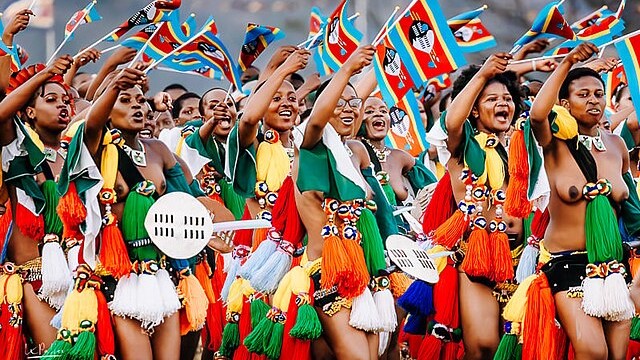In the heart of Eswatini, rhythm is memory. Across villages and public squares, the sounds of drums and the synchronized movements of dancers continue to preserve one of Southern Africa’s most enduring cultural traditions. Traditional dance in this small kingdom is more than performance—it is storytelling, history, and identity carried forward with each step.
Among the most iconic forms is the Sibhaca, a dance performed with striking energy and precision. Women clad in colorful attire move in harmony, their footwork sharp yet graceful, their rhythm tethered to ancestral ties. The Sibhaca is both spectacle and ritual, a celebration of femininity and solidarity that links performers to a lineage of resilience.
Equally compelling is the Ingwenyama, a warrior’s dance that channels ancestral strength. Here, dancers stamp and leap to the pulse of heavy drums, embodying valor and remembrance. The choreography, intense and deliberate, pays homage to the bravery of past generations while reinforcing the community’s shared sense of pride.
These dances are not designed for mere entertainment. They mark milestones, sanctify rituals, and communicate collective values in ways that words alone cannot. In many ceremonies, the movements function as a kind of living language—celebrating harvests, honoring leaders, or expressing grief and renewal. Each performance becomes a bridge between the sacred and the everyday.
Preservation of these traditions has long rested in the hands of community elders. In homesteads and cultural villages, they pass knowledge to younger generations, teaching not only steps but also the meanings embedded within them. The process is deliberate, emphasizing that dance in Eswatini is inseparable from heritage itself. The act of teaching ensures continuity, even in a world where globalization often erodes local customs.
Festivals such as the annual Umhlanga, or Reed Dance, amplify this cultural expression on a grand stage. Thousands gather to witness dancers in unison, adorned in vivid regalia, performing for both local audiences and international visitors. Events like these affirm the role of dance as a unifying force, capable of drawing together disparate communities in a shared rhythm.
Amid shifting cultural landscapes worldwide, Eswatini’s traditional dances stand as a testament to resilience. They embody the balance between continuity and change, retaining authenticity while evolving to meet contemporary audiences. For many Swazis, the survival of these dances represents not only an artistic tradition but also a collective act of cultural defiance against loss.
In Eswatini, dance is not confined to the stage. It is lived, taught, remembered, and celebrated—a heartbeat of national identity that continues to echo across generations.
Sources:
- Eswatini Tourism Authority. Culture and Traditions: Dance in Eswatini. Mbabane, 2024.
- Kuper, Hilda. An African Aristocracy: Rank Among the Swazi. Oxford University Press, 2001.
- Nyawo, Caesar. “The Role of Traditional Performance in Eswatini’s Cultural Identity.” Journal of Southern African Studies, vol. 47, no. 3, 2021.
- UNESCO. Intangible Cultural Heritage in Southern Africa: Eswatini. Paris, 2022.


